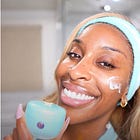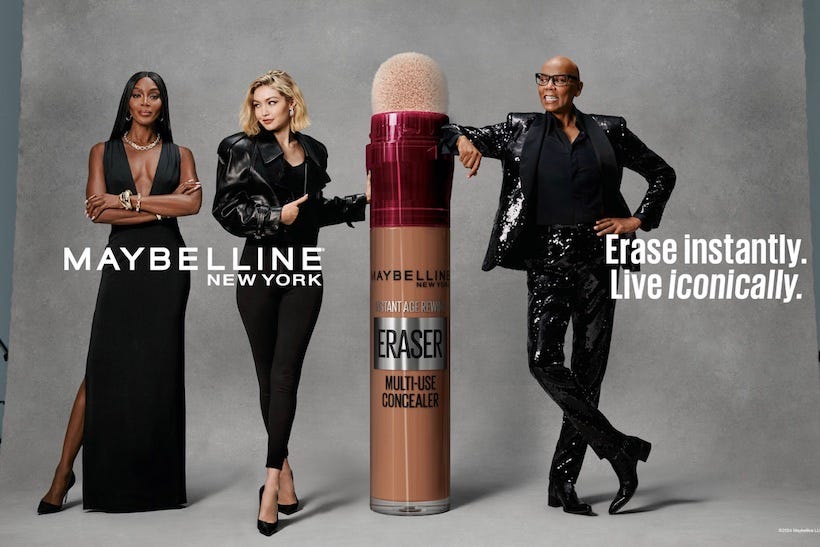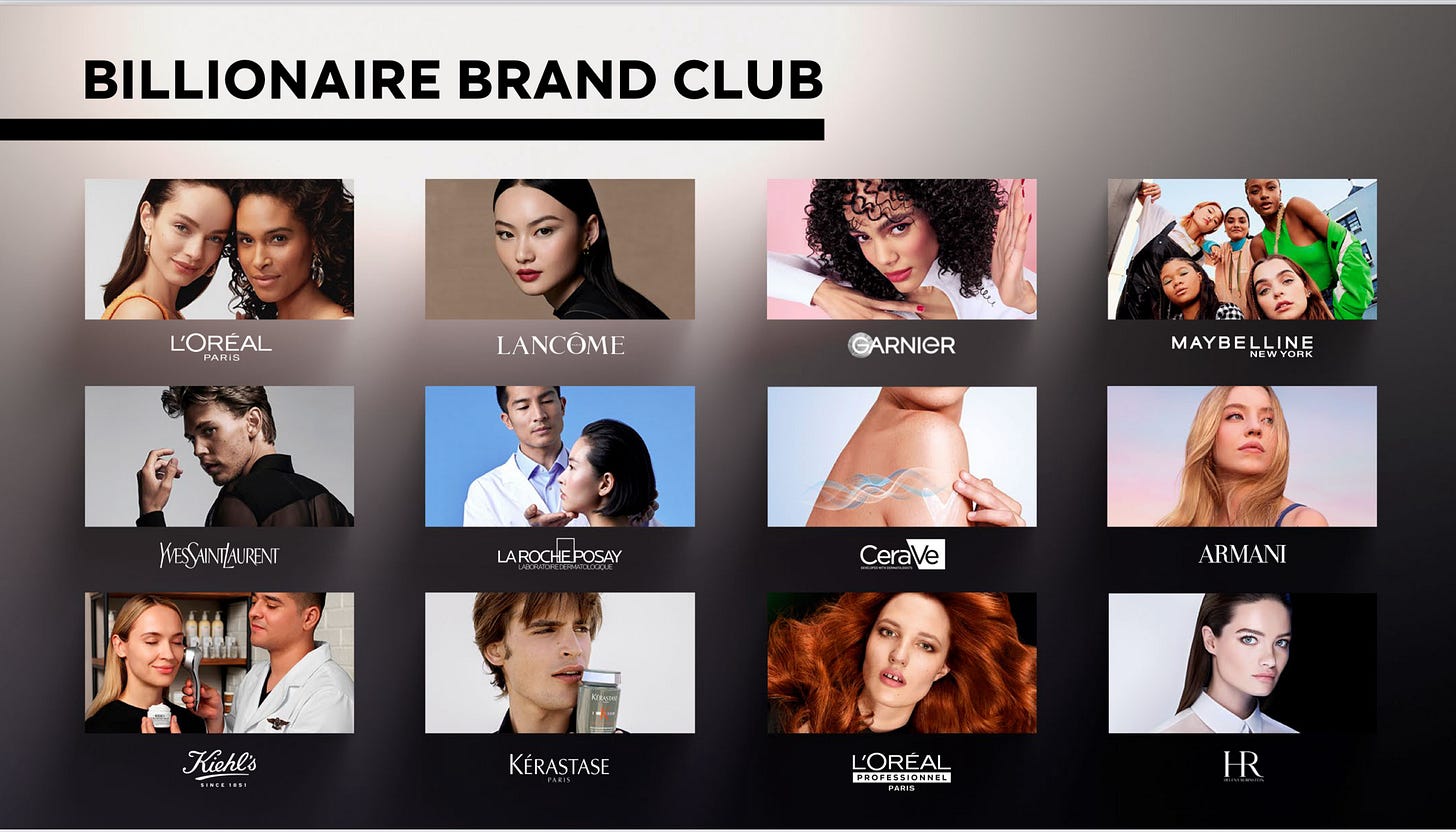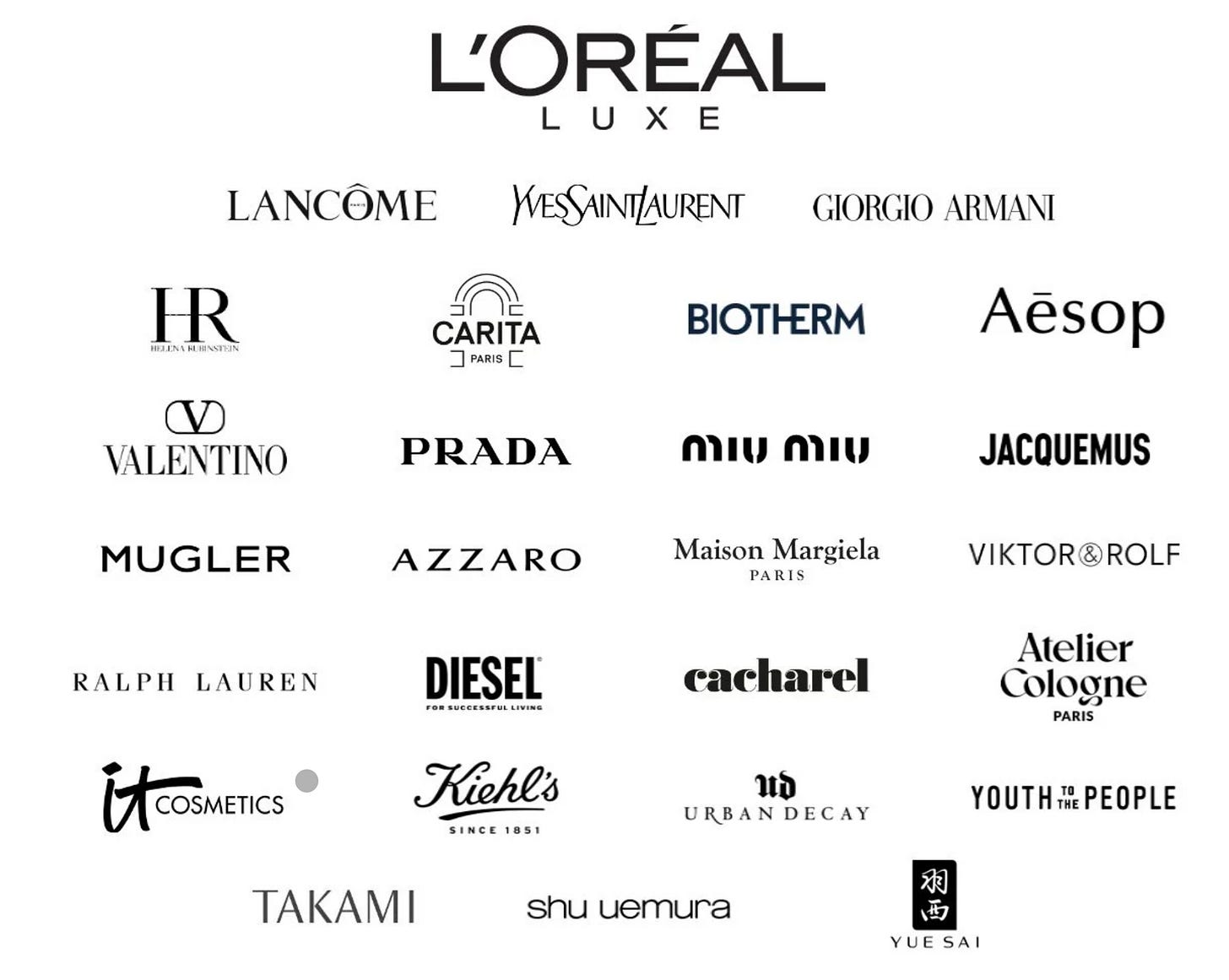Hey Everyone,
Welcome to the final installment of Shelf Life, a three-part series on how evolving M&A strategies among major CPG players could reshape the exit landscape for smaller brands.
In Part 1, we explored why both acquisitions and divestitures matter in today’s uncertain economy and how they reveal which strategics are serious about buying.
Our first case study centered on Shiseido’s moves toward becoming a global leader in skincare. Followed by a dissection of Unilever’s focus on premium beauty & wellbeing.
Get up to speed with parts 1 & part 2 below:
Now, let’s get into our final case study on none other than L’Oréal.
Case Study #3: L’Oréal
L’Oréal proves that true market leaders never coast. While peers recalibrate after lackluster quarters, L’Oréal is strategically and aggressively pulling ahead.
About L’Oréal
L’Oréal is the ultimate household name in beauty. The French company is the largest beauty conglomerate globally (by market cap), home to 37 brands.
In its 2024 fiscal year, L’Oréal generated €43.5 billion in revenue (5.1% like-for-like growth YoY). Its bread and butter is skincare and sun protection (39% of sales), followed by makeup (19% of sales).
The company has four divisions: Professional Products (11%), Consumer Products (37%), L’Oréal Luxe (36%), and Dermatological Beauty (16%).
Its largest segment, Consumer Products, dominates the mass market retail channels through its namesake brand L’Oréal Paris, Maybelline, and Garnier, among others.
Not far behind is L’Oréal Luxe, whose high-end skin care and beauty products are distributed in selective retail outlets. Familiar brands include Kiehl’s, Aesop, and Youth to the People.
Why pay attention to L’Oréal
L’Oréal is the #1 luxury and mass retail beauty player globally, yet the company hasn’t let up on M&A. As the winner across multiple beauty categories, they must now defend that position with further consolidation of new promising brands.
Acquisitions have always been a part of the beauty house’s growth story. They have acquired at least one business or executed a licensing agreement every year since 2014. All gas, no brakes, as the young people say.
What makes L’Oréal one to watch is its calculated luxury strategy. The company has built a track record of adapting the legacy of ultra-premium couture houses and bringing an aspirational appeal to today’s luxury consumer.
Licensing deals with brands like Valentino, Prada, and Miu Miu have helped L’Oréal become the #1 luxury beauty player, especially in fragrance, while steadily gaining market share. This has translated to top-line growth, L’Oréal Luxe grew +2.7% in 2024.
With over €2 billion in annual sales from CeraVe alone, they’ve already cemented themselves as a mass-market leader. With L’Oréal Luxe, there’s still room to grow, especially with heightened competition in the space.
Estée Lauder, for example, bought the Tom Ford brand for $2.3 billion back in 2023, and Hermès has expanded its beauty offerings just in the past couple of years.
While Consumer Products and L’Oréal Luxe comprise similar portions of revenue, Consumer Products achieves multi-billion dollar revenue with just 11 brands, while L’Oréal Luxe does the same with 26 brands and licensing agreements.
Back to our favorite topic of “power brands,” from parts one and two, 4 of the 11 Consumer Products brands are billion-dollar brands. Just five of the 26 L’Oréal Luxe brands are.
Kiehl’s and Lancome (kind of) are the only premium skincare brands in the “billionaire brand club” so far. Aesop is well on its way, which had $530M+ sales at acquisition, but L’Oréal is already considering which brand in the portfolio or elsewhere could be next.
L’Oréal has been crystal clear about its next chapter: to elevate the portfolio and double down on innovation. With “science at heart” as a core pillar, they’re investing in research-backed, high-performance products that speak to a savvier, more skeptical consumer.
Today’s luxury beauty consumer is excited by aspiration and access. Maybe you can’t afford a $3,000 YSL tote, but that $42 lip oil feels just as indulgent.
This sentiment is widespread, as shown by Circana data, which indicates that growth in the prestige market has outpaced that of the mass market in recent years. Consumers want constant premiumization, and the Luxe portfolio was getting a bit stale. L’Oréal bought Urban Decay back in 2012, but the brand has been lackluster as of late. When’s the last time you saw someone buy a Naked Beauty palette?
The moves
Unlike Shiseido and Unilever, L’Oréal has leaned into its acquisition firepower—buying more than selling over the recent years. Its most recent divestiture was Body Shop in 2017, which was sold to Natura & Co. Fun fact, Natura & Co is actually who L’Oréal bought Aesop from in 2023!
The moves to consolidate leadership in beauty have focused on where clinical credibility meets consumer relevance and premium experiences.
2020
Acquired:
Mugler Brands & Azzaro, purchased from Clarins Group
Thayers
Brought L’Oréal deeper into designer fragrance, while adding a popular mass brand known for its witch hazel treatments.
2021
Acquired:
Takami
Youth to the People
Expansion into the premium Japanese skincare market + a culturally-relevant science-driven premium skincare brand rooted in superfoods.
2022
Acquired: Skinbetter Science
A strong move into medical-dispensed skincare. A newer brand poised to boost the dermatological beauty business.
2023
Acquired: Aesop
This has been L’Oréal’s largest acquisition to date. Aesop provided access to male customers, existing retail stores, and a blend of prestige and body care.
2024
License Agreement: Miu Miu
Continued domination in luxury fragrance and fashion house partnerships.
Acquired: 10% stake in Galderma
A creative step toward strategic scientific partnerships with Galderma as a leader in injectable aesthetics.
2025
Partnerships: This wasn’t an acquisition, but L’Oréal announced a long-term partnership with JACQUEMUS, including launching its beauty line
Acquired: Medik8 (I shared my thoughts on this acq. with Beauty Independent here.)
More premium moves across beauty.
Reality Check
While L’Oréal continues to outperform peers, the broader prestige beauty category is showing signs of strain. For the first time in years, growth in the mass beauty market outpaced prestige in Q1 2025, according to Circana. Mass posted a 3% increase, while prestige remained flat, boosted by a 4% lift in fragrance, yet dragged down by a 1% decline in makeup.
It’s only a single quarter, but the shift is notable. L’Oréal’s luxury portfolio is still delivering above-industry performance, yet these figures underscore the need for ongoing portfolio discipline. With a history of aggressive acquisitions, a slowdown, or a potential divestiture would be telling. If that moment comes, it may signal a recalibration in how L’Oréal defines strategic value.
Mass market performance remains critical. Prestige may command more influence in the zeitgeist, but mass continues to generate consistent revenue at scale. Just this week, Coty announced it may split its luxury and consumer units, a move that highlights the uneven terrain even within top beauty players. The broader lesson? Strength in prestige does not insulate a company from needing to adapt.
What this tells us
Premium and science-backed is the baseline.
L’Oréal’s recent acquisitions underscore the rising importance of clinical credibility across categories, not just in skincare, but increasingly in fragrance and dermatological beauty. Aspiration alone isn’t enough; performance must follow.Even standout brands must prove they move the needle.
It’s not about acquiring what’s already working; it’s about identifying what can scale meaningfully within an existing portfolio. Strategic value now hinges on incremental growth potential and synergy, not just popularity.Integration is where the strategy succeeds...or stalls.
Owning a premium asset is step one. Integrating it effectively into L’Oréal’s operational machine is where the real work begins. With heightened competition and a slower growth environment, execution will determine whether this acquisition streak pays off.
Well, folks, that’s it for the Shelf Life series. What did you think? If you have ideas for different series in the future, drop a comment below or shoot over a message.









